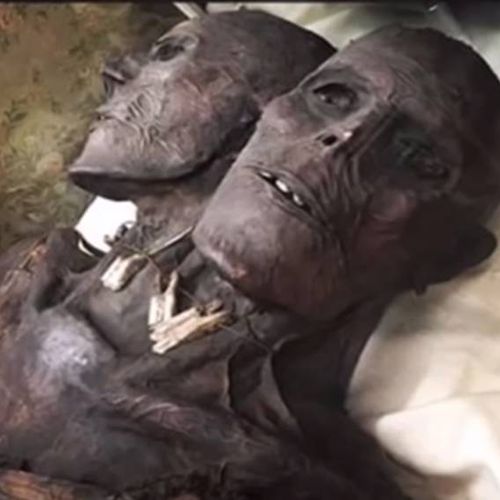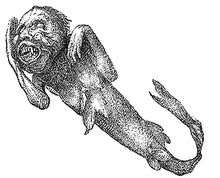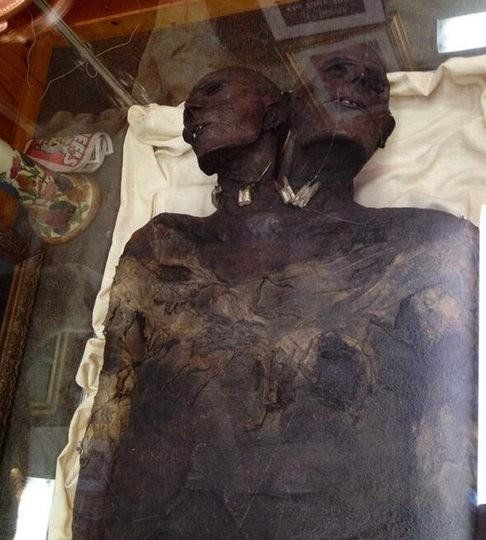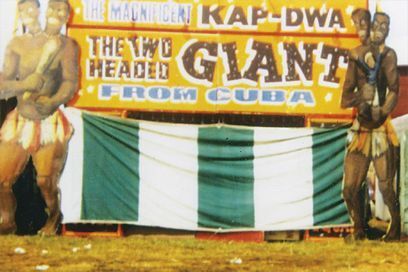
| Added | Tue, 18/05/2021 |
| Источники | |
| Феномены | |
| Версии |
The Patagonian giants are a mythical race of people, whose stories first began to appear in early European reports about the then little-known areas on the coast of Patagonia (a huge region in the southern tip of South America, divided between Argentina and Chile on the axis of the Andes). They were allegedly at least twice the normal height of a human: some sources report people as tall as 12 to 15 feet (3.7 to 4.6 meters) or more. Stories about these incredible people were considered real information about the region among Europeans for 250 years.
It is believed that the myth of the Patagonian giants was finally debunked only when an official account of Byron's journey appeared in 1773. This report showed that Byron did meet with a tribe of Patagonians, but the tallest of them was only 6 feet 6 inches (1.9 m) tall. In other words, they were tall, but not 12-foot (3.6 m) giants. The people Byron met were probably members of the Tehuelches Indian tribe, which was destroyed by the Rocca expedition in 1880. Byron's information was confirmed by the French naturalist Alcide Dessalines D'Orbigny, who wrote that he did not see giants in Patagonia, but only tall and beautiful people. Anthropometric studies conducted in the XX century, suggested that the average height of the Tehuelche in the XVI century, when they were met by the expedition of Magellan, was about 180 centimeters, which is much higher than the average height of the Spaniards of those times (about 165 cm), so the Indians really could seem to them "giants".
However, references to the possible existence of the Patagonian giants are still found, and there is even material evidence in favor of their reality. One such piece of evidence is believed to be the mummy Kap Two (Kap Dwa) – a two-headed giant with a height of 3.66 meters (more than 12 feet). There are two conflicting versions of the origin of Cap Two.
According to the first of them, the giant was met by Spanish sailors around 1673 on the beach of Patagonia. He was captured and taken to their ship, where he was tied to the mast. The Patagonian broke free, engaged the sailors, and was killed by a pike that pierced his chest. After that, his body was mummified and eventually ended up first in the UK, and then (in the 19th century) in the United States, where it became an exhibit of many shows as evidence of the unknown world.
The second story is that the giant was found already dead on the beach with a spear in his chest. According to this version, the body was found by natives of Paraguay, who mummified it and worshipped it during a kind of religious ceremony. At some point, the captain of the British schooner George Bickle heard about it. He entered Paraguay and stole the body, then brought it with him to Britain, where it also became an exhibit of the show.
As a result of many twists and turns, the mummy ended up in the Edwardian horror club and went from one showman to another over the years. In 1914, it fell to Weston Birnbeck and served for the next 45 years as an exhibit at an exhibition in North Somerset, England, before being purchased by Thomas Howard in 1959. After several more resales, the mummy ended up in Baltimore, Maryland, in the collection "The Antique Man Ltd", owned by Robert Gerber and Robert Jansen.
It is natural to assume that the mummy is a fake, like other exhibits of museums of oddities (such as the Fijian sea maiden, also now on display in the collection of "The Antique Man Ltd").
But could such a giant really exist? To understand this, it is necessary to turn to medical theory. We have no data on whether Cap Two had other abnormalities or developmental features, so we will only consider possible reasons for its high growth and the presence of two heads. So, if the mummy is not a fake, then such an appearance can be caused by a combination of mutations and diseases.
In particular, extremely high growth is characteristic of people suffering from gigantism (or acromegaly). This disease occurs in individuals with open epiphyseal growth zones (in children and adolescents) with excessive secretion of the anterior pituitary gland of growth hormone (STH). After ossification of epiphyseal cartilage (closure of growth zones), gigantism turns into acromegaly – a disease in which the production of growth hormone (somatotropin) increases, while there is a violation of the proportional growth of the skeleton and internal organs, as well as a metabolic disorder.
Gigantism and acromegaly are two age-related variations of the same pathological processes: hyperplasia and hyperfunction of the cells of the pituitary gland that produces somatotropic hormone (growth hormone). Increased secretion of growth hormone can be observed in pituitary lesions as a result of gland tumors (pituitary adenoma), intoxication, neuroinfections (encephalitis, meningitis, meningoencephalitis), traumatic brain injuries.
People with abnormal growth are characterized by poor health, and their life expectancy is small.
The tallest man in the history of medicine, whose existence is confirmed by irrefutable evidence – Robert Pershing Wadlow, born in Alton, Illinois, February 22, 1918. At the time of the last measurement on June 27, 1940, he was 2.72 m (8 ft 11.1 in) tall, which is still almost a meter shorter than the giant Cap Two.
Two heads are found in Conjoined dicephalic twins (dicephalic parapagus usually has two heads and one torso, four arms, and an additional set of some internal organs). Siamese twins are identical twins who are not completely separated in the embryonic period of development and share common body parts or internal organs. The probability of Siamese twins being born is approximately one in 200,000 births. About half of Siamese twins are stillborn. The resulting infant survival rate is 5-25 %. According to statistics, Siamese twins are more likely to be female (70-75 % of cases).
There are two opposing theories that explain the origin of Siamese twins. At the heart of the generally accepted theory is the process of division, in which the fertilized egg is split only partially. Another theory that is no longer considered the basis is the fusion theory, which assumes that the fertilized egg is completely separated, but the stem cells of one twin find similar stem cells on the other and connect the fruits together. Improper expression of genes, such as the goosicoid protein (GSC), can also lead to Siamese twins. This protein activates BMP4 inhibitors and contributes to the regulation of head development. Excessive or insufficient expression of this gene in laboratory animals leads to serious deformities in the head area, including duplications.
In most cases, Siamese twins live very little, but there are a few rare cases in which they lived to a significant age (for example, Italian brothers Giovanni and Giacomo Battista Tocci, born in the late 19th century, died only before World War II, as well as still living American sisters from Minnesota named Abby and Brittany Hensel, born in 1990).
It turns out that for the existence of such a giant, many factors must have coincided, allowing him not only to be born with these anomalies, but also to live to adulthood. It is also worth considering that a person with a height of more than 3 meters would need quite a lot of other life-compatible mutations and biological features to exist for a significant time in the conditions of Earth's atmospheric pressure, oxygen level, gravity, etc.The low probability of such coincidences, as well as the proximity of the mummy at exhibitions with obvious fakes, makes us prefer the version of deliberate falsification, rather than the real existence of Cap Two.
In articles about the giant, it is often mentioned that the authenticity of the mummy was confirmed by various experts. So, allegedly for the first time it was examined and analyzed by two doctors in 1930; for the second time, already in 1960, the examination was carried out by other doctors. However, we have not been able to find detailed results of those examinations, or at least the names of doctors, nor have we been able to find the results of modern studies of this mysterious mummy, which would allow us to draw unambiguous conclusions about its origin and authenticity.
Log in or register to post comments















